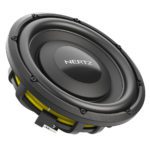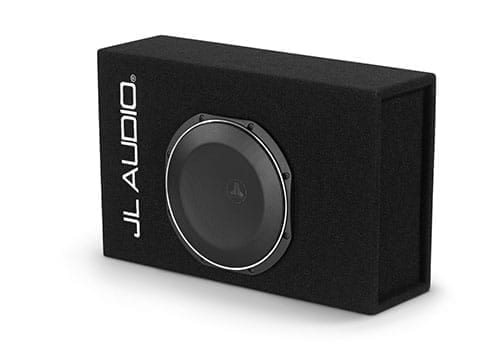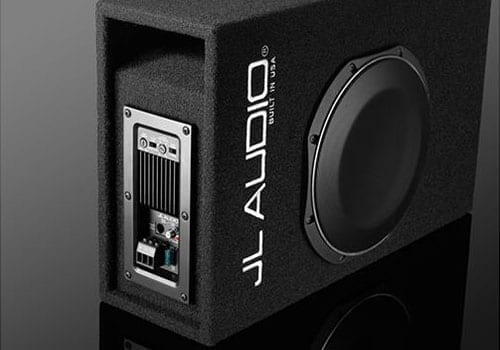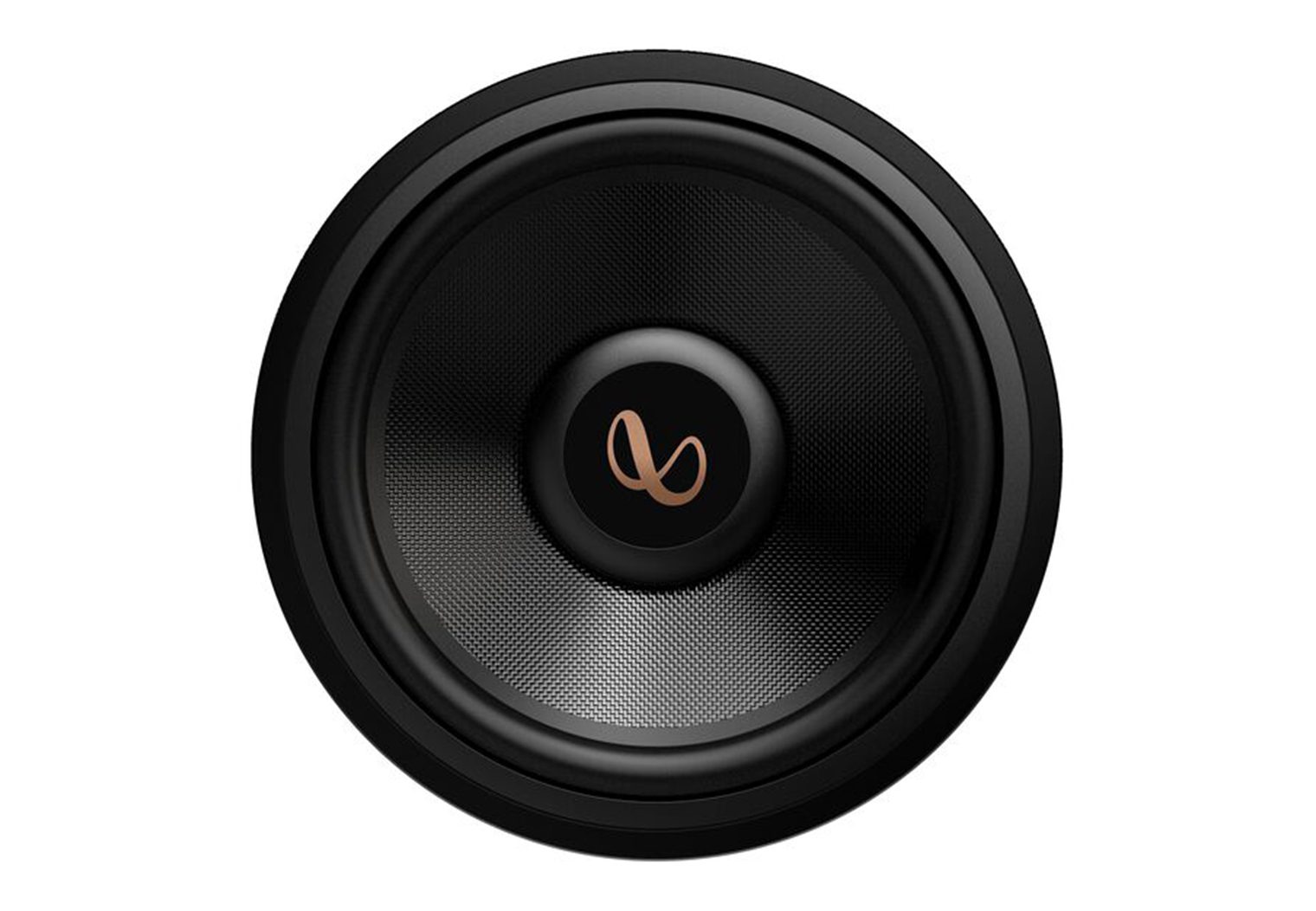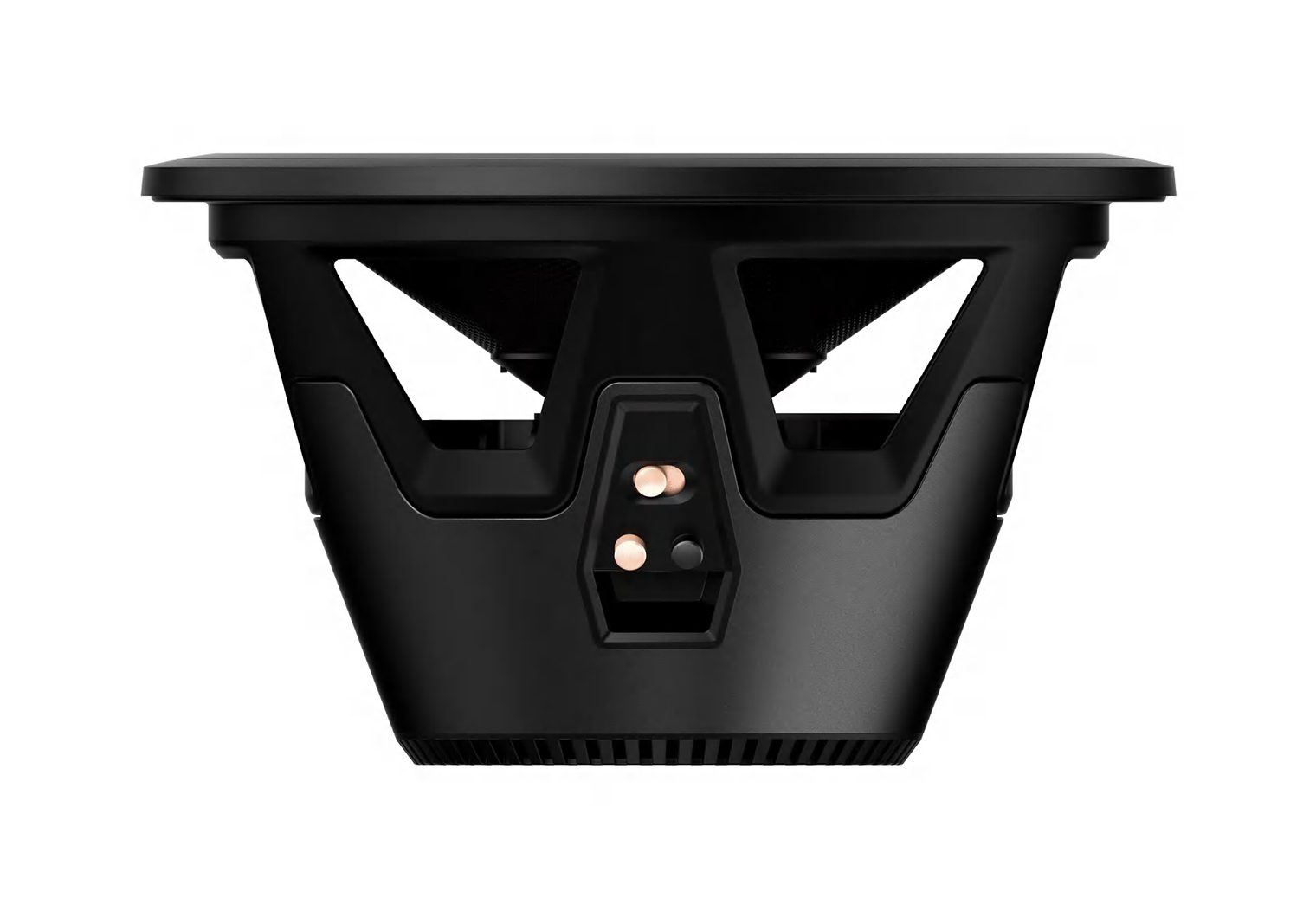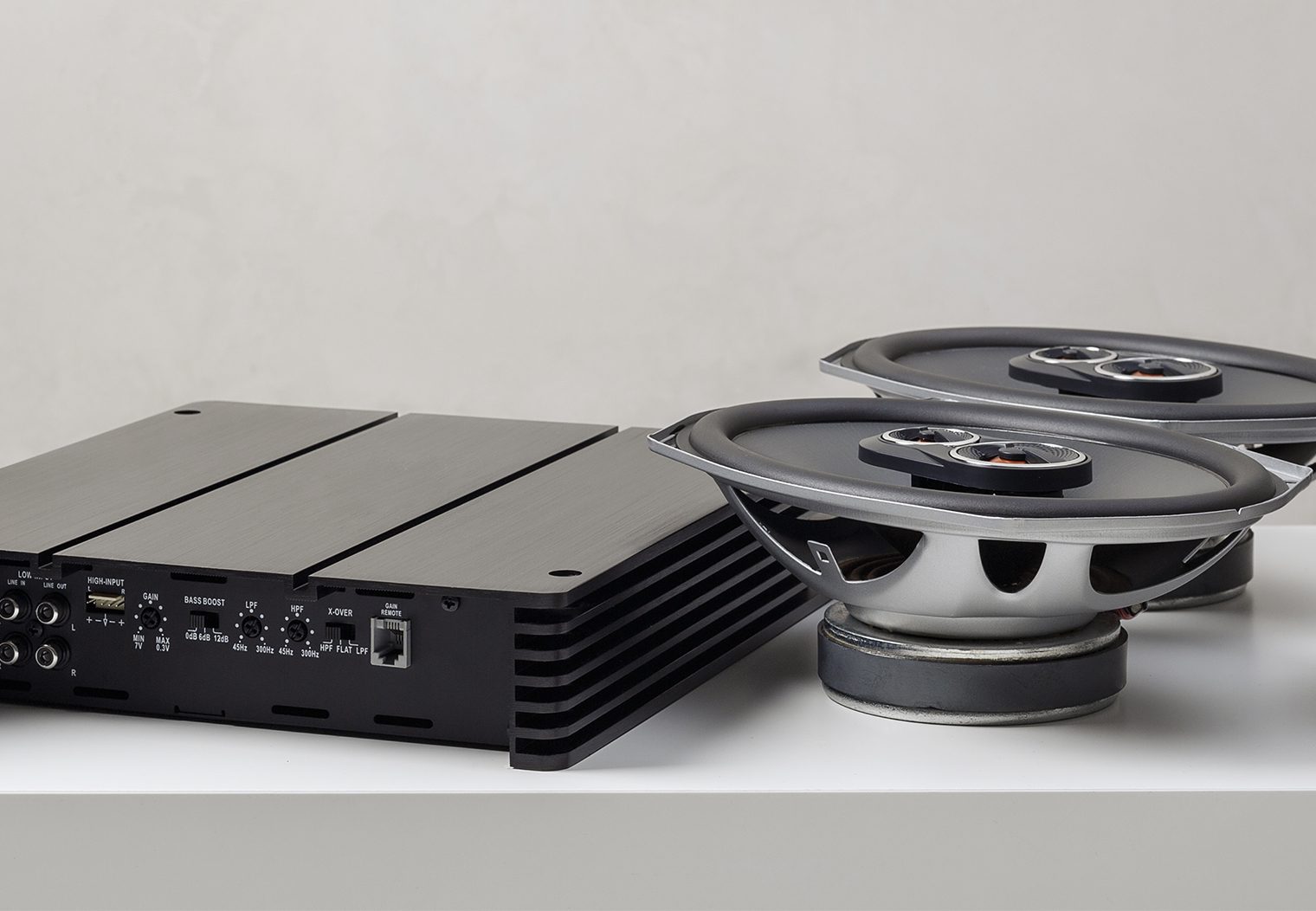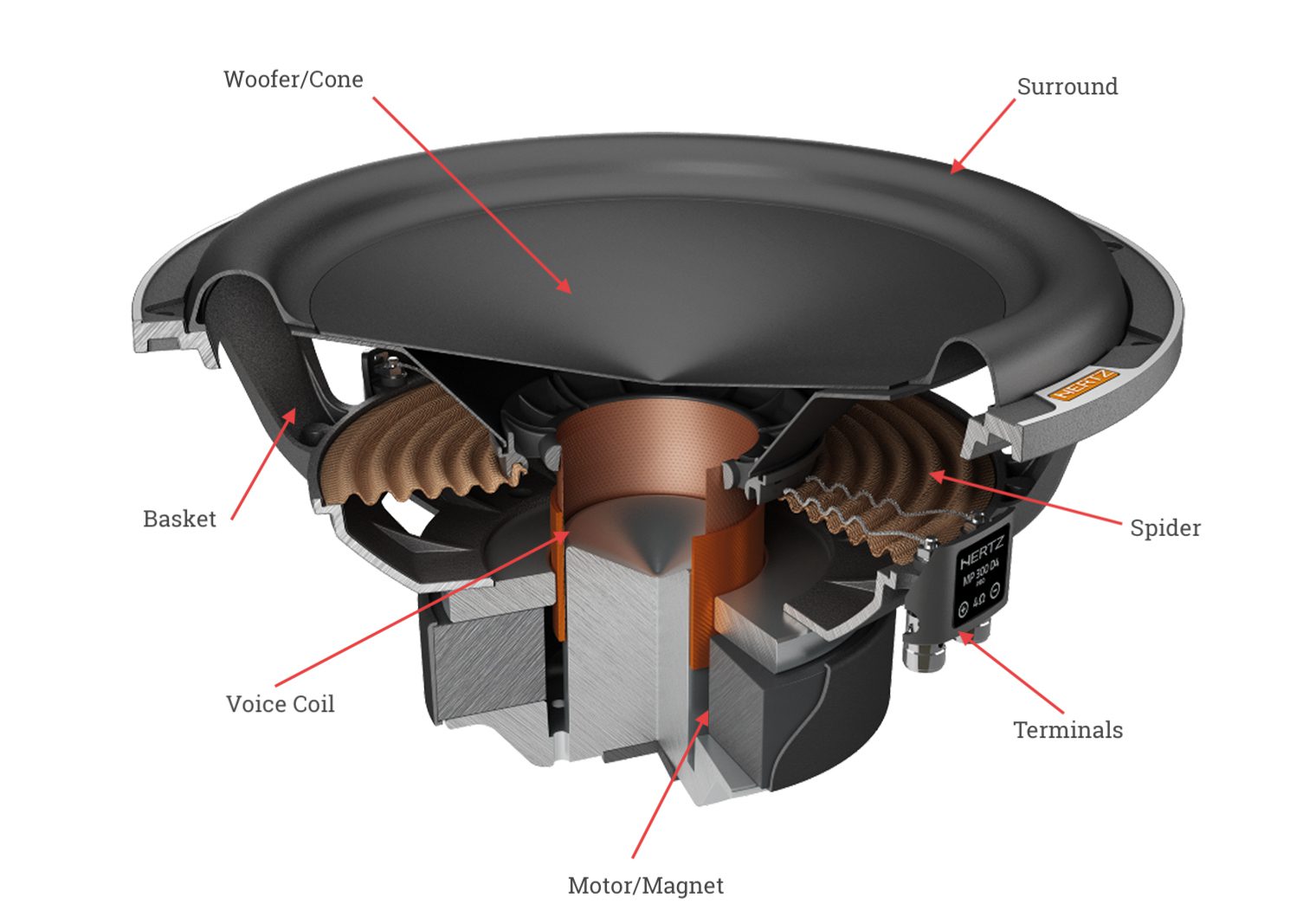Best Subwoofers for Your Car or Truck (Tested) – 2025 Buyer’s Guide
- By: Kameron Scott
- Published: October 13, 2025
- Updated: November 9, 2025
Tested by us
How we evaluate: We install and use the same types of subs featured on this page—traditional component subs (e.g., JL Audio W7AE-3), ultra-slim/shallow models (Hertz Mille Pro Shallow), powered enclosures (JL ACP110LG-TW1), and true free-air options (Infinity Kappa 123WDSSI). Instead of lab graphs, we focus on what matters in real cars and trucks: enclosure fit, clean bass at volume, and system matching with your amp and space.
- Enclosure & fitment first: Verify space and box type (sealed vs ported vs prefab) for trunks, hatchbacks, and under-seat truck installs; note cutout/depth constraints and mounting hardware quality.
- System matching: Pair subs with common mono/5-ch amps; check 2Ω/4Ω wiring scenarios, gain setup, and crossover alignment so the sub complements (not smothers) your mids/highs.
- Real-world bass quality: Judge low-end extension, punch, and control on varied music at daily listening and “turn-it-up” volume; favor subs that keep vocals clean and kick tight.
- Powered subs: For all-in-one boxes, validate plug-and-play wiring, enclosure flex/port noise, and whether the built-in amp delivers satisfying output in small spaces.
- Free-air use cases: When installing in rear decks or open baffles, confirm panel rigidity, recommend power appropriately, and call out trade-offs vs. boxed solutions.
- Everyday practicality: Cable routing, quick-disconnects, cargo impact, and rattles—plus tips to prevent buzz (seal leaks, treat loose trim) for a clean daily driver.
Disclosure: Some subs are manufacturer samples; most we purchase. Brands don’t review or approve our picks, and our recommendations are based on hands-on installs and listening.
In this article: I've updated our guide to today’s best car subwoofers with fresh testing notes and real-world installation tips from years of hands-on work—everything from compact powered solutions to high-output components, shallow-mount truck installs, and true free-air setups. You’ll find our short list of picks, why we chose them, where they shine, and what to consider to match your vehicle, music, and space constraints.
Subwoofers are speakers engineered to reproduce the lowest octaves of your music—typically 20–200 Hz—where impact and realism live. Even excellent factory “premium” systems roll off early; adding the right sub fills that gap so your mids/highs can breathe and your mix sounds complete. Some listeners want balance and definition, others want pressure and chest-thump. Both are valid—your enclosure, power, and tuning decide the outcome.
We typically see two motivations to add a subwoofer:
- Round out the system: restore missing low-end so rock, pop, country, and R&B sound full and coherent without boom.
- Feel the bass: prioritize output and extension for EDM, hip-hop, and low-frequency demo tracks where SPL and tactile impact matter.
What Size Do I Need?
Common car sub sizes are 8″, 10″, and 12″ (plus JL’s 13.5″). As a rule, larger cones move more air and reach deeper with less effort, while smaller cones are quicker and easier to fit. Real-world patterns we see in installs:
- 8″: tight, punchy, fast transients; great in hatchbacks/sedans where space is tight and you value definition.
- 10″: the “do-everything” size—excellent balance of depth, punch, and footprint for most daily drivers.
- 12″ / 13.5″: deeper extension and effortlessness at higher volumes; ideal for trucks/SUVs or anyone who wants sub-20–30 Hz authority with the right box and power.
Not sure where to start? Skim our Comprehensive Guide to Choosing a Subwoofer for enclosure types, impedance matching, and power targeting basics.
Here Are Our Recommended Car Subwoofers for Your Vehicle
Best Overall Component Car Subwoofer
>>> Check out our full list of Component Car Subwoofers <<<
Traditional component subs give you maximum flexibility—choose your enclosure, amp, and placement for your vehicle and goals. If you’ve got the space and want the strongest foundation for sound quality and output, this is the category.
JL Audio W7AE-3 Series
Why We Picked It
JL’s W7 has been the reference standard for two decades because it blends control and command: deep extension without bloat, slam without smear. Its W-Cone assembly and OverRoll surround maximize stiffness and excursion, while DMA (Dynamic Motor Analysis) keeps the motor linear under heavy loads—exactly what you hear as clean, undistorted bass at volume. We’ve installed and tuned every size over the years; the 10″ is the sweet spot for most daily builds, while the 12″/13.5″ step into “effortless” territory when you have the space and power.
For a deeper tech dive, see our W7 in-depth feature review and compare against real-world boxes we’ve measured alongside the Stinger DC2-S12B loaded enclosure and Sony Mobile ES 12″ subs.
| Sizes | RMS Power | Works Best In | Install Notes |
|---|---|---|---|
| 8″, 10″, 12″, 13.5″ | 500–1500W (size-dependent) | Sealed or ported | OverRoll hides mounting screws; plan cutout carefully, allow generous current capacity |
Reasons to Buy
- Class-leading linearity and control at high excursion
- Works sealed or ported; scalable from 8″ to 13.5″
- OverRoll/W-Cone/DMA tech = clean output at volume
Reasons Not to Buy
- Requires real power/current to shine
- Enclosures can be larger vs shallow/powered options
- Premium price tier
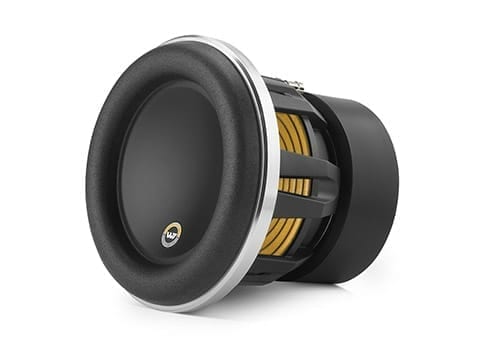
8W7AE-3
Subwoofer Size: 8″
Power Handling: 500 RMS DVC 3Ω
Price Comparison
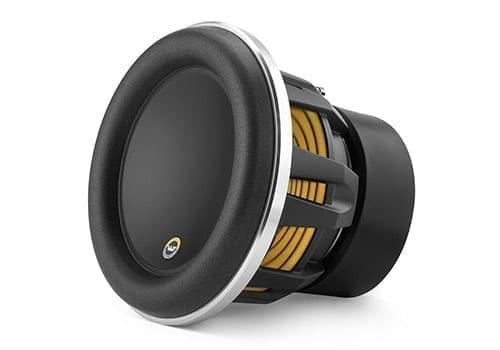
10W7AE-3
Subwoofer Size: 10″
Power Handling: 750W RMS DVC 3Ω
Price Comparison
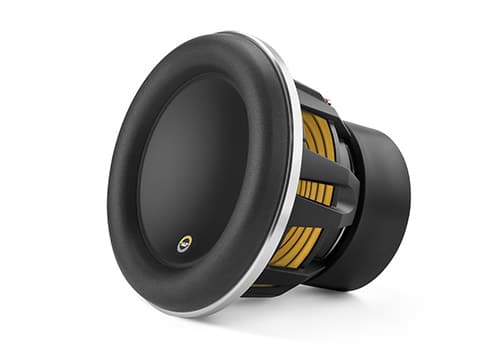
12W7AE-3
Subwoofer Size: 12″
Power Handling: 1000W RMS DVC 3Ω
Price Comparison
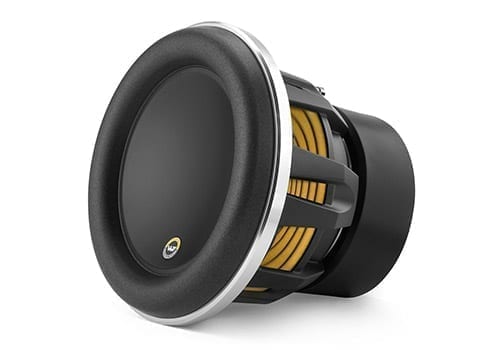
13W7AE-3
Subwoofer Size: 13″
Power Handling: 1500W RMS DVC 3Ω
Price Comparison
We test gear and may earn a commission. Buy now clicks are how we make money and support the time we spend making content. This doesn’t affect our picks.
Tuning Tip: If you want a tighter, SQ-leaning response, start sealed and target ~Qtc 0.75–0.85; for more output and low-20s extension, step to a properly sized ported design and verify port airspeed in your modeling.
Best Overall Shallow Car Subwoofer
>>> Check out our full list of Shallow Car Subwoofers <<<
Shallow subs used to be compromises. Not anymore. Hertz re-engineered the MPS for the slim form factor rather than shrinking a standard design, which is why it behaves like a “real” sub in truck boxes and tight coupes.
Hertz Mille Pro Shallow (MPS)

Why We Picked It
The MPS uses a compact suspension group and inward magnet topology to reduce depth while increasing linear excursion ~20% versus conventional shallow layouts. Pair that with the six-layer copper voice coil and A.I.R. cooling and you get genuinely deep bass from a tiny sealed volume (as low as 0.4–0.5 ft³).
See our in-depth MPS feature review for enclosure targets and measurements. If you’re weighing powered vs shallow, also skim our amplifier approach explainer (5-ch vs 4-ch + mono).
| Sizes | RMS Power | Enclosure | Best Use |
|---|---|---|---|
| 10″, 12″ (2Ω / 4Ω) | ~500W | Ultra-compact sealed (0.4–0.5 ft³) | Under/behind truck seats, coupes where depth is limited |
Reasons to Buy
- Ultra-shallow depth fits tight truck/coupe installs
- Real low-end for the size; +20% linear excursion design
- Small sealed volumes (≈0.4–0.5 ft³) still perform
Reasons Not to Buy
- Not as effortless down low as full-depth comps
- Needs careful sealing/box build to meet expectations
- Best results still want ~500W clean RMS
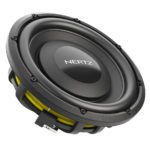
MPS 250 S2
Subwoofer Size: 10″
Power Handling: 500W RMS DVC 2Ω
Price Comparison

MPS 300 S2
Subwoofer Size: 12″
Power Handling: 500W RMS DVC 2Ω
Price Comparison
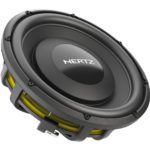
MPS 300 S4
Subwoofer Size: 12″
Power Handling: 500W RMS DVC 4Ω
Price Comparison
Best Overall Powered Subwoofer
>>> Check out our full list of Powered Subwoofers <<<
Powered (active) subs are complete systems—enclosure, sub, and amplifier tuned to work together—so install is faster and fitment is easier. They’re perfect when you want meaningful bass with minimal wiring and space.
JL Audio ACP110LG-TW1
Latest Prices
Key Features
- Compact 10-inch subwoofer and 400W Class-D amplifier
- MDF box with V-Groove technology
- Flared slot porting
- Measures 21” L x 13.5” W x 6.625” H Weighs 25 pounds
Why We Picked It
Built in JL’s Florida facility, this system’s V-Groove MDF box, flared slot port, and TW1 low-clearance driver with concentric tube suspension produce big-system bass from a compact footprint. DCD amplification maximizes a 12-volt supply into a ¼-ohm TW1 load for real 400W RMS performance without the heat or current draw typical of larger multi-amp builds.
| Driver | Amplifier | Dimensions | Fitment Notes |
|---|---|---|---|
| 10″ TW1 | 400W Class-D (DCD) | ~21″ L × 13.5″ W × 6.625″ H | Low profile fits many trunks/hatches; confirm port clearance and venting |
Reasons to Buy
- True one-box solution; fast, clean install
- Surprisingly big output from compact footprint
- DCD amp + TW1 driver are purpose-matched
Reasons Not to Buy
- Not as configurable as separate amp + box + driver
- Height/length may still be tight for some under-seat spots
- Premium pricing vs entry powered boxes
Curious how this compares to compact under-seat units? See our Sony XS-AW8 first-look and our RAM 1500 under-seat install walkthrough.
Best Overall Free Air Subwoofer
>>> Check out our full list of Free Air & Infinite Baffle Subwoofers <<<
Free-air (infinite baffle) subs are built to perform without a traditional enclosure—think rear deck factory locations or marine panels where the rear wave vents into a large cavity. They need robust motors, excellent thermal handling, and realistic power expectations.
Infinity Kappa 123WDSSI
Latest Prices
Why We Picked It
Kappa’s steel basket resists flex, the aero-cooled 2″ voice coil stays stable at temperature, and the damped glass-fiber cone stays pistonic at excursion—exactly what you want when there’s no box to help control the driver. Rated 500W RMS/1500W peak, we recommend sizing amplifier power conservatively in free-air use for longevity and linearity.
| Size | Impedance | Use Case | Notes |
|---|---|---|---|
| 12″ | Selectable 2Ω/4Ω | Rear-deck car locations, marine IB | Confirm mounting depth; verify baffle sealing to prevent front/rear wave cancellation |
Reasons to Buy
- Purpose-built for IB: strong motor, cooled VC, rigid cone
- Selectable 2Ω/4Ω for flexible amp matching
- Excellent option for rear-deck and marine panels
Reasons Not to Buy
- Needs conservative power in IB to preserve linearity
- Requires careful baffle sealing to avoid cancellation
- Greater mounting depth than some 12″ IB options
New to IB? Start with our explainer: Free Air Subwoofers Defined, and for marine-specific context see our Kicker KMF free-air review and Fusion Signature Series 3 first look.
Setup, Power & Tuning: Quick Wins
- Match your impedance to the amp’s sweet spot (e.g., 1Ω vs 2Ω vs 4Ω) to extract clean power without strain; see our primer: Powering Subs: 5-Channel vs 4-Channel Explained.
- Choose the right box: sealed for tightness/accuracy, ported for efficiency/output; model port velocity to avoid chuffing.
- Tune with known tracks at low volumes first; validate excursion, then raise gain. Use our Deep-Bass Songs for Box Tuning list to expose problems fast.
Car Subwoofer FAQ
Sealed vs ported—what’s better?
Sealed emphasizes transient accuracy and smaller boxes; ported delivers more output per watt and deeper extension if designed correctly. Your music taste and space decide.
How much power do I really need?
For daily SQ with headroom: target 60–80% of the sub’s RMS in sealed boxes; for ported or multiple subs, ensure the amp’s real-world output (at your wiring impedance) matches thermal limits and electrical capacity.
Truck under-seat—shallow or powered?
Shallow gives you enclosure freedom and future upgrade paths; powered is faster to install and space-efficient. See our Sony XS-AW8 first-look and RAM 1500 under-seat install for expectations.
Other Articles We Think You Should Review About Car Subwoofers
Why Trust Our Opinion on Car Subwoofers?
CarAudioNow isn’t your typical automotive blog—we’re an award-winning platform built by car enthusiasts who have first hand experience in the audio shop installing products. Led by our editor, Kameron, and a select team of expert writers, we’ve dedicated years to testing and installing a diverse range of subwoofers, building a deep understanding of their performance, sound quality, and overall value to consumers. We get our hands dirty, purchasing some of the products on our list and graciously receiving others from manufacturers. Our recommendations are the result of a careful blend of first-hand experiences and in-depth research. We frequently refresh our lists with new and noteworthy subwoofers in an effort to stay at the forefront of what’s on the market and provide our readers with the latest and greatest products too.
And at CarAudioNow, we don’t rely on AI to spit out generic lists. We take pride in delivering content that goes beyond regurgitated information – car audio and video is what we love. Rather, our focus is on crafting meaningful lists with practical insights to empower you to make informed decisions. We’re not here for a quick buck or to chase Google rankings; our reader’s trust, reputation and genuine love for the products we recommend is why we do what we do. Read more about how we choose our top lists here.


